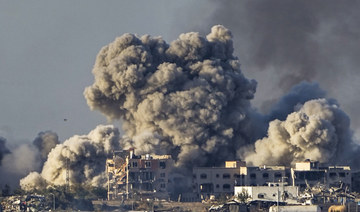GAZA: Days after the end of a brief bout of fighting last month, Gazan workers were already returning to work across the border under a permit scheme launched as part of Israel’s strategy of using economic inducements to help stabilize the volatile enclave.
For those lucky enough to obtain a permit, a job in Israel can bring in 10 times what they could earn at home, a powerful incentive in an impoverished area where 2.3 million people live squeezed into a narrow coastal strip.
“I have paid my debts, renovated the house and brought some things I had needed,” said Omar Abu Sidu, 31, who has been working in a car wash company in the southern Israeli town of Sderot for the past six months.
According to the World Bank, unemployment in Gaza runs at about 50 percent and more than half the population lives in poverty, exacerbated by repeated bursts of fighting and a years-long economic blockade imposed by both Israel and Egypt.
The application process for permits is often tangled up between offices run by the Islamist Hamas movement and the official Palestinian Authority, which lost control of Gaza in 2007 but which deals with Israeli authorities on the issue.
Some workers also complain that the permits do not give them many normal employment rights, including pensions and accident compensation insurance.
But that has done little to curb demand and the Hamas-run Labour Ministry in Gaza said it had received 100,000 applications for permits since March, when it began to be involved in the application process.
“It has made a big difference,” Abu Sidu said, who had arrived several hours early to go back across the Erez crossing into Israel, where he earns 350-400 shekels ($102-$117) a day, compared with the 40 shekels ($11.60) he was making in Gaza.
The permits were introduced as part of Israel’s twin strategy of enforcing military control while offering some economic benefits to reduce tensions following an 11-day war last year with Hamas, which controls Gaza.
UNCERTAINTY REMAINS
As well as the permits, which analysts say bring in around 7 million shekels ($2 million) a day into Gaza’s economy, Israel has also promised further loosening of economic restrictions, depending on positive signs from Hamas.
Aware of the economic benefits to Gazans but wary of being trapped into making concessions to what Palestinians see as the occupying power, Ehab Al-Ghsain, the Hamas-appointed deputy of the Labour Ministry said Israel’s demands “will not influence our political positions.”
Israeli officials say the permits have forced Gaza’s rulers in Hamas to face a choice between maintaining their fundamental opposition to Israel and giving Palestinians access to well-paying jobs.
“The leadership in Gaza must take a decision,” said Moshe Tetro, head of the Israeli military’s Coordination and Liaison Unit with Gaza. “Do they want civil and economic openness or devastation and destruction?“
Earlier this month, Prime Minister Yair Lapid, who faces a re-election battle in November, said the government may increase the number of permits to 20,000 from some 15,000 at present.
Any further increase would depend on Hamas agreeing to return the remains of missing Israeli soldiers believed to have been killed in Gaza.
For Gazans on the street, the political dispute leaves them exposed to both sudden and unpredictable border closures by Israel and an opaque and difficult-to-understand application process.
“I applied a year ago,” said Hussein Nabhan, a 33-year-old father of six. “Some people applied one or two months ago and they got permits, but we don’t have connections,” he said.
Both Hamas and the Palestinian Authority separately deny there are any bribes or the influence of connections in how people are selected to obtain the permits.
Even for those who navigate the process successfully, much uncertainty remains and while the benefits are welcome, workers are constantly aware that they can be withdrawn at any time.
Last month’s fighting between Israel and the militant Islamic Jihad faction was limited in scope and there was no full blown confrontation with Hamas. But after at least six bouts of conflict since Israel evacuated its forces from Gaza in 2005, there is constant awareness that things can change quickly.
“When there is an escalation, we fear we might not be issued permits again and that we would stop working. We’re on our toes all the time,” said Abu Sidu. ($1 = 3.4258 shekels)
Gazans caught between hope and mistrust as Israel offers work
https://arab.news/b878a
Gazans caught between hope and mistrust as Israel offers work
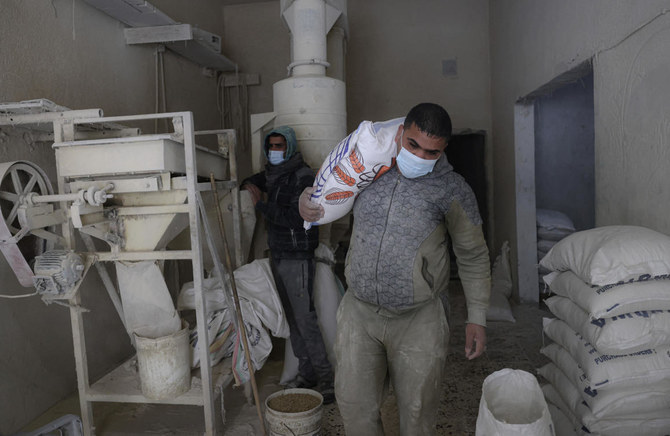
- Workers can earn 10 times what they make in Gaza
- Some workers also complain that the permits do not give them many normal employment rights
Israeli forces raze parts of Gaza’s Jabalia, hit Rafah with airstrikes

- In Jabalia, a sprawling refugee camp built for displaced civilians 75 years ago, Israeli army used bulldozers to clear shops and property near local market, residents said
- Israel said it has returned to the camp, where it had claimed to have dismantled Hamas months ago, to prevent the militant group that controls Gaza from regrouping
GAZA STRIP: Israeli forces thrust deeper into Jabalia in northern Gaza on Tuesday, striking a hospital and destroying residential areas with tank and air bombardments, residents said, while Israeli airstrikes killed at least five people in Rafah in the south.
Simultaneous Israeli assaults on the northern and southern edges of the Gaza Strip this month have caused a new exodus of hundreds of thousands of people fleeing their homes, and sharply restricted the flow of aid, raising the risk of famine.
In Jabalia, a sprawling refugee camp built for displaced civilians 75 years ago, the Israeli army used bulldozers to clear shops and property near the local market, residents said, in a military operation that began almost two weeks ago.
Israel said it has returned to the camp, where it had claimed to have dismantled Hamas months ago, to prevent the militant group that controls Gaza from regrouping.
In a roundup of its activity over the past day, the Israeli military said it had dismantled “about 70 terror targets” throughout the Gaza Strip, including military compounds, weapon storage sites, missile launchers and observation posts.
Palestinian medics said Israeli missiles struck the emergency department of Jabalia’s Kamal Adwan Hospital, prompting panicked staff to rush patients on hospital beds and stretchers to the rubble-strewn street outside.
“The first missile when it hit, it hit the entrance of the emergency department. We tried to enter, and then a second missile hit, and the third hit the building nearby,” said Hussam Abu Safia, the head of hospital.
“We cannot go back inside to them ... The emergency department provides a service for children, the elderly and people inside the departments of the hospital.”
Residents and medics said Israeli tanks were besieging another Jabalia hospital, Al-Awda Hospital, for the third day. In Geneva, WHO Director-General Tedros Adhanom Ghebreyesus said northern Gaza’s sick and wounded were running out of options.
“These are the only two functional hospitals remaining in northern Gaza,” Tedros said. “Ensuring their ability to deliver health services is imperative.”
More than 35,000 Palestinians have been killed in the war in Gaza, which is now in its eighth month, according to the Gaza health ministry. At least 10,000 others are missing and believed to be trapped under destroyed buildings, it says.
Israel is seeking to eradicate Hamas after militants from the group stormed into southern Israel on Oct. 7, killing 1,200 and taking more than 250 hostages, by Israeli tallies.
The war has devastated the overcrowded coastal enclave, destroying houses, schools and hospitals and creating a dire humanitarian crisis.
Aid from a US-built pier resumed moving into warehouses in Gaza on Tuesday using alternative routes, the Pentagon said. The distribution was halted for three days after crowds of needy residents intercepted trucks.
AIRSTRIKES
In the south, airstrikes killed three children in a house in Khan Younis and at least five people including three children in a home in Rafah, health officials said.
East of Khan Younis, residents said they were fleeing Khuzaa town after Israeli troops began an incursion on the eastern edge of the territory, bulldozing across the border fence.
“Bombing everywhere, people are leaving in panic. It was a surprising incursion,” one resident from Khuzaa told Reuters by phone as he and his family were leaving.
Israel is pushing on with its operations in Rafah on Gaza’s southern border with Egypt, where more than half of the territory’s 2.3 million population had sought refuge after being displaced from areas further north.
UNRWA, the main United Nations agency in Gaza, estimated as of Monday that more 800,000 had fled since Israel began targeting the city in early May, despite international pleas for restraint over concern about civilian casualties.
On Tuesday, the agency said food distributions had been suspended in Rafah due to lack of supplies and insecurity.
Israel has pledged to continue with the Rafah assault to root out what it says are four remaining battalions of Hamas fighters holed up there. Tanks made incursions into the eastern Rafah suburbs of Jeneina, Al-Salam, and Brazil, according to residents.
The Israeli military said over the past day it had “identified a terrorist shooting mortar shells at IDF (Israeli Defense Forces) troops,” though no injuries were reported. It said it had taken out the enemy with an airstrike and had located rockets and additional military equipment in the area.
Is Israel’s Netanyahu pursuing perpetual war in Gaza to save his political skin?
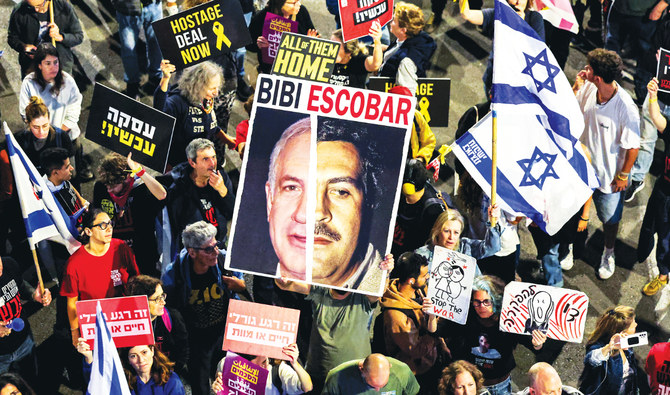
- Critics in the war cabinet have accused the PM of lacking a ‘day after’ strategy for Gaza
- Fragmentation within government and among the population raise specter of mass protests
LONDON: Last Wednesday evening, five Israeli soldiers were killed and seven others wounded in a “friendly fire” incident in northern Gaza.
The five paratroopers, aged between 20 and 22 and reported by The Times of Israel to have been part of an ultra-Orthodox company of paratroopers, died when an Israeli tank mistakenly fired on their position during confused fighting in Jabaliya.
They are not the first Israeli soldiers to have died at the hands of their comrades. According to the IDF, of the 279 personnel killed so far in Gaza since the start of ground operations on Oct. 27, 49 have died in similar incidents or accidents.
But after seven months of war, with Israeli troops fighting and dying over territory that had, ostensibly, already been cleared by the IDF earlier in the war, the stark futility of these latest deaths has struck a bitter chord in Israel.

As Benjamin Netanyahu continues to evade making a deal with Hamas to bring home the remaining hostages — an ongoing national trauma emphasized by the recovery on Friday from Gaza of the remains of three of the victims of the Oct. 7 massacre at the Nova music festival — many fear the Israeli prime minister is pursuing a strategy of perpetual war solely in a bid to save his own political skin.
It has been no secret that over recent months Israel’s military has been pushing Netanyahu to develop a “day after” strategy. Last Wednesday, just hours before the deaths in Jabaliya, Israel’s defense minister broke rank to publicly criticize his prime minister.
In an extraordinary video address, Yoav Gallant, a former general, revealed that since October he had been consistently pressing Netanyahu in cabinet meetings to work toward a political solution in Gaza.
The end of the military campaign, he said, “must come together with political action. The ‘day after Hamas’ will only be achieved with Palestinian entities taking control of Gaza, accompanied by international actors, establishing a governing alternative to Hamas’ rule.
“Unfortunately,” he added, “this issue was not raised for debate. And worse, no alternative was brought up in its place.”

Gallant then embarked on an unprecedented public attack on Netanyahu that at times veered close to open revolt. “Indecision is, in essence, a decision,” he said.
“This leads to a dangerous course, which promotes the idea of Israeli military and civilian governance in Gaza. This is a negative and dangerous option for the State of Israel — strategically, militarily, and from a security standpoint.”
In short, he said: “I will not agree to the establishment of Israeli military rule in Gaza.”
Then he issued a direct challenge.
“I call on Prime Minister Benjamin Netanyahu to make a decision and declare that Israel will not establish civilian control over the Gaza Strip, that Israel will not establish military governance in the Gaza Strip, and that a governing alternative to Hamas in the Gaza Strip will be raised immediately.”
Netanyahu did not immediately respond to the attack in public. But right-wing national security minister Itamar Ben Givr — part of the shaky coalition government Netanyahu must hold together to cling on to power, and who has called repeatedly for the expulsion of Palestinians from Gaza and its resettlement by Jews — demanded Gallant be sacked.

Then, on Saturday, Benny Gantz, the other member of Netanyahu’s three-person war cabinet and his main political rival, announced that he would withdraw his centrist National Unity party from Israel’s emergency coalition on June 8 unless the prime minister agreed to a six-point “day after” plan for Gaza.
Gantz’s plan includes securing the return of hostages, ending Hamas’ rule, demilitarizing Gaza and establishing an international administration with “American, European, Arab and Palestinian elements” to manage its civilian affairs.
“Personal and political considerations have begun to penetrate the Holy of Holies of Israel’s national security,” Gantz said.
“A small minority has seized the bridge of the Israeli ship and is piloting it toward the rocky shoal,” and steps have to be taken urgently to avoid a “long and harsh existential war.”
Gantz also called on Israel to “advance normalization with Saudi Arabia as part of a comprehensive process to create an alliance with the free world and the West against Iran and its allies.”
Benny Gantz’s 6-point Gaza blueprint
- Bring the hostages home.
- Topple Hamas rule, demilitarize the Gaza Strip and gain Israeli security control.
- Alongside that Israeli security control, “create an international civilian governance mechanism for Gaza, including American, European, Arab and Palestinian elements — which will also serve as a basis for a future alternative that is not Hamas and is not (Palestinian Authority President) Abbas.
- Return residents of the north (evacuated due to Hezbollah attacks) to their homes by Sept. 1, and rehabilitate the western Negev (adjacent to Gaza, targeted by Hamas on Oct. 7).
- Advance normalization with Saudi Arabia as part of a comprehensive process to create an alliance with the free world and the West against Iran and its allies.
- Adopt a framework for (military/national) service under which all Israelis will serve the state and contribute to the national effort. Gantz, a former general, wants an end to exemption from military service for ultra-Orthodox Israelis.
Israel’s leadership is now so fragmented, and its population increasingly divided over Gaza and the wider issue of a Palestinian future, that there is even speculation that Netanyahu might be facing the unprecedented possibility of a military coup.
“As the war seems to have less of a point and less success, everything seems to be coming apart,” Shaiel Ben-Ephraim, analyst and host of the podcasts “Israel Explained” and “History of the Land of Israel,” told Arab News.
“Something has to give. The military is talking about a coup. I don’t think it is going to happen, but on Telegram and WhatsApp, military people who could do something are saying: ‘Someone should remove Netanyahu, someone should do something about Ben-Givr.’
“That’s very alarming. We’ve been hearing that from regular people on the left and the center for a long time. But now, even people in the Shabak (Israel’s internal security agency) are discussing the idea.”

Netanyahu, said Daniel Seidemann, an Israeli attorney specializing in Israeli-Palestinian relations and founder of NGO Terrestrial Jerusalem, “is leading us toward a never-ending insurgency.
“The entire military establishment opposes it,” Seidemann told Arab News. “The credible people in the government who are not racist and fanatics oppose it. But he’s adamant, and there are three reasons why.
“First, habitually Netanyahu is incapable of making a decision. He always procrastinates.
“Secondly, he doesn’t believe that peace exists. For him, life is eternal conflict, never decided, and the only goal is to be a bit stronger, a bit more sophisticated than your enemy and to contain them. But you’re not going to solve anything that way.”
But compounding these “predispositions” in the current situation in Gaza, he said, was Netanyahu’s overwhelming self-interest.
“An end of the war, a ceasefire, is the end of Netanyahu’s career and possibly jail for him, full stop,” he said. “That is why he has turned the hostages and their families into enemies of the state.”
There had, he said, been “an organized, sophisticated smear campaign against these people. It’s just remarkable. Why? Because you cannot prioritize returning the hostages and continue to fight in Gaza. It’s one or the other.
“Netanyahu knows that if the hostages are released, the price for that will be a ceasefire, and the ceasefire will be the end of him. So he is doing everything in his power to perpetuate this war. This is the way most people in Israel are talking today. His considerations are all personal.”
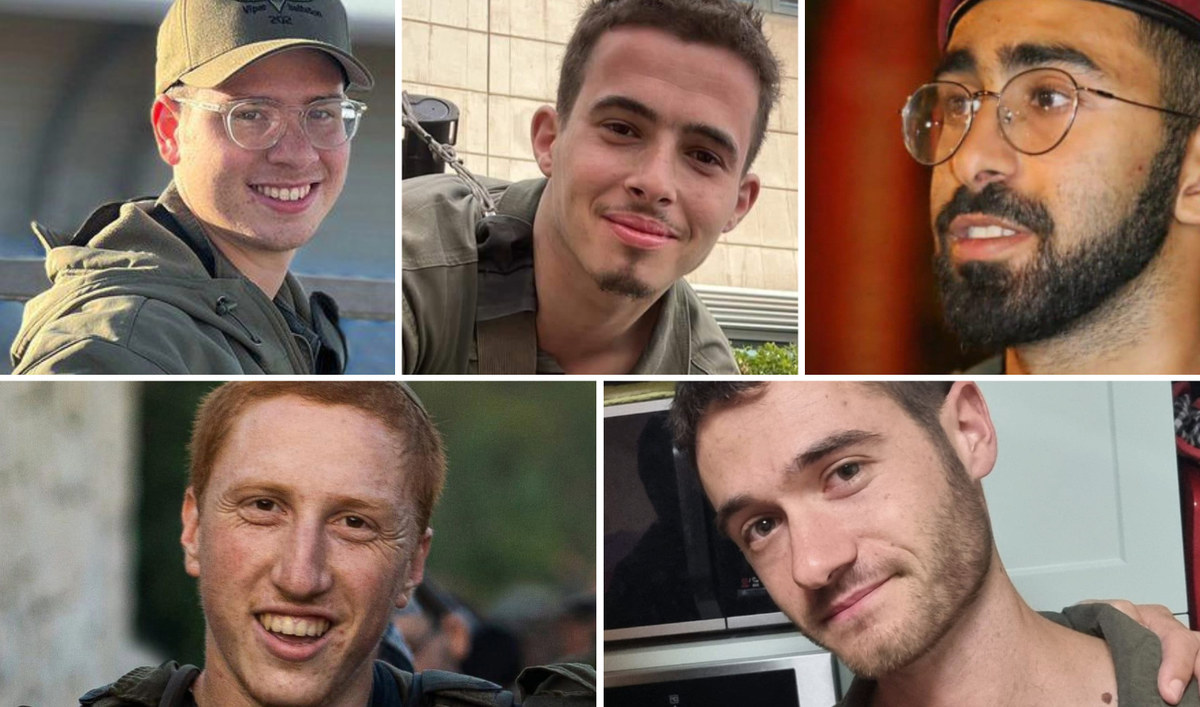
For Seth Frantzman, an adjunct fellow with the Washington-based Foundation for Defense of Democracies and senior Middle East correspondent and analyst at The Jerusalem Post, the lack of apparent direction over Gaza is rooted as much in systemic issues as in Netanyahu’s personality.
“I don’t think that they have invested the resources for long-term planning in terms of the strategy of what comes afterwards,” Frantzman told Arab News.
“That doesn’t mean that there aren’t voices that haven’t been calling for that — the Defense Ministry has been pushing for a day-after plan for many months.
“But Israel has spent 15 years or more ‘managing’ the conflict in Gaza with Hamas. Hamas became the devil that everyone is familiar with and therefore the idea of picking up some alternative kind of structure is a bit complicated — even though it’s obvious, after Oct. 7, that the murderous genocidal nature of Hamas means you just can’t live next to a group like that or continue to appease it.”
But Netanyahu’s “decisive indecision” is proving to be a gift for Hamas, Ben-Ephraim said.
“I think that at first Hamas was unpleasantly surprised by how Israel banded together and struck back so strongly, and the amount of support it got from the US.
“But because the Israeli strategy since has been so horrifically bad, they’re now very pleasantly surprised and indeed stunned to see Israel destroy its international standing, and its internal cohesion and solidarity, to no end besides Netanyahu’s surviving.”

Even before his boss Gallant spoke out, Herzi Halevi, the IDF chief of staff, was reported to have taken Netanyahu to task over his failure to develop a long-term strategy.
On May 12, Hebrew-language television station Channel 13 reported what it said was a verbatim account of a heated meeting between Halevi and the prime minister.
“We are now operating once again in Jabaliya,” Halevi, a paratrooper and former head of Israeli military intelligence, reportedly said.
“As long as there’s no diplomatic process to develop a governing body in the Strip that isn’t Hamas, we’ll have to launch campaigns again and again in other places to dismantle Hamas’ infrastructure.”
It would, he added, “be a Sisyphean task” — a reference to the ancient Greek myth about a king condemned by the gods to spend eternity repeatedly pushing a boulder up a hill, only for it to roll back down again every time.
A whiff of unprecedented dissent, if not outright revolt, is in the air.
“I don’t think you’re going to be seeing large-scale conscientious objection,” Seidemann said. “That’s not how it works here. But what you will see are tens of thousands of army reservists going home and leading the protests.”
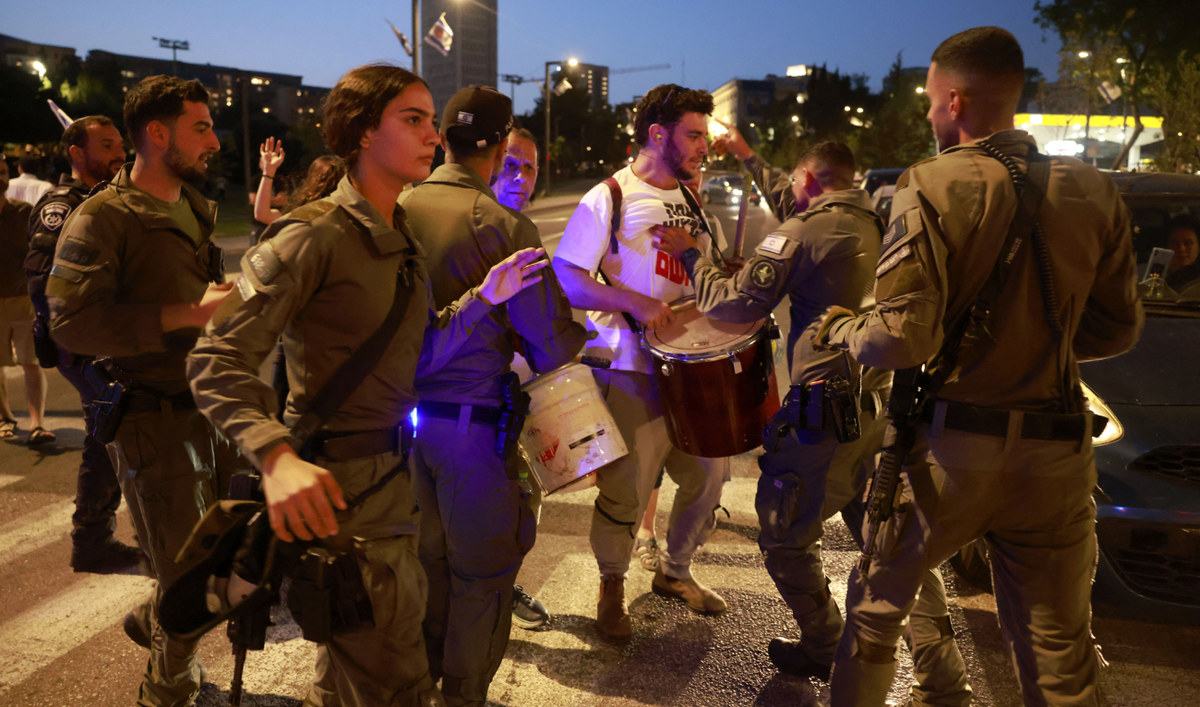
Such protests have brought about political change in the past in Israel, most notably the toppling of Prime Minister Golda Meir in the wake of the 1973 Yom Kippur War, in the run-up to which she had repeatedly rebuffed peace overtures from Egyptian president Anwar Sadat.
“There are hundreds of thousands of people in the streets already,” Seidemann said. “And there have been two kinds of protests — for the release of the hostages and for elections for a new government.
“Initially the hostage families distanced themselves as a group. They wanted to appear to be apolitical. But that’s over. They’ve joined forces. There will be an event of some kind at some time over the next month or two, which will bring out millions of Israelis.”
It would, he believes, be impossible for Israel to reoccupy and resettle Gaza, as right-wingers in Netanyahu’s cabinet have demanded.
Quite apart from the uproar such a move would provoke among Israel’s staunchest allies in the West, Gaza “is going to be a lunar landscape,” he said. “Just to maintain some semblance of normality, Israel would have to harness so much of its resources, energies, money, just to be on this fool’s errand of running Gaza.”
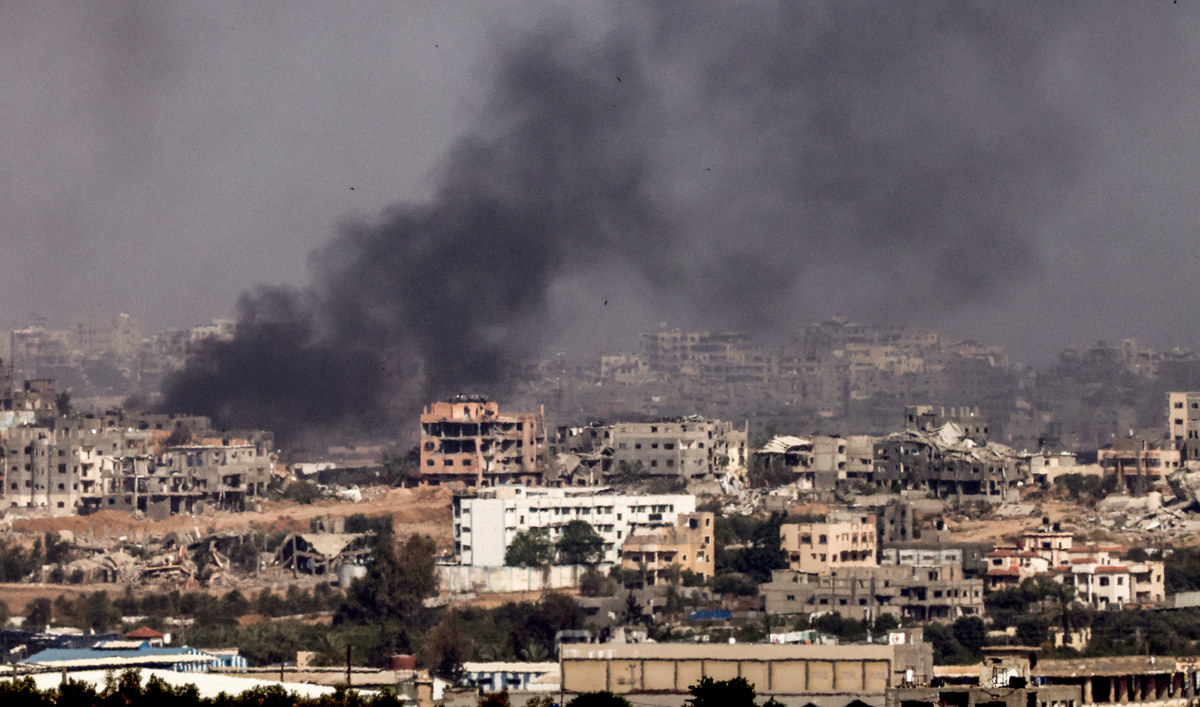
In the meantime, millions are being traumatized, not only in Gaza, where the death and suffering are on such a shocking scale, but also — and crucially for Netanyahu’s future prospects — in Israel.
“The day after, both societies are going to be totally traumatized,” Seidemann said.
“A friend of mine sees the police records, and in Tel Aviv the police are receiving dozens of reports weekly of people who think they can hear digging under their apartment buildings.
“That’s the level of trauma that you’re dealing with and there’s a growing sense that this can’t go on.”
Whatever the eventual solution, and however the war in Gaza is finally brought to an end, one thing is certain, he believes.
“Nothing is possible with Netanyahu at the helm. The only thing that can be done until he’s gone is damage control.”

Officials discuss plans for 54th session of the Council of Arab Information Ministers

- Arab League’s assistant secretary-general and Bahrain’s minister of information review agenda for the 3-day ministerial meeting, which begins on Monday
- A key item is the implementation of an Arab Media Strategy to Combat Terrorism
CAIRO: The Arab League’s assistant secretary-general and head of its media and communication sector, Ambassador Ahmed Rashid Khattabi, and Bahrain’s minister of information, Ramzan Al-Nuaimi, discussed the agenda and arrangements for the 54th session of the Council of Arab Information Ministers, which will take place on May 27 to 29.
Their meeting followed the Arab Summit in Manama last week, which issued resolutions relating to various strategic, political and developmental issues affecting the Arab region. It also explored ways to enhance mechanisms for Arab cooperation, including media support for the Palestinian cause in light of the latest developments and the repercussions of Israel’s war on the Gaza Strip.
Khattabi and Al-Nuaimi reviewed the draft agenda for the upcoming ministerial meeting, which was approved by the Executive Office of the Council of Arab Information Ministers during its meeting on Dec. 24 in Libya.
It includes several items related to proposed projects for the development and enrichment of a comprehensive and diverse Arab media system. A key item is the implementation of an Arab Media Strategy to Combat Terrorism, which was approved during the Arab Summit.
Other significant topics include a media map for achieving sustainable development by 2030; environmental media; educational media; ways to enhance the status of women in the media; and the development of capacity through the use of artificial intelligence technology.
The agenda also includes a proposal by the General Secretariat for the development of a charter detailing the responsibilities of the media in coverage of elections. It includes issues such as the role of the media in electoral campaigns; respect for the rules of pluralism, transparency and neutrality; and the prevention of discrimination based on gender, race or language.
During their meeting next week, the information ministers will also discuss organizational matters, and the winners of the eighth Arab Media Excellence Awards will be announced on the sidelines of the event. More than 100 entries were submitted and the winners chosen by a special committee of judges from member states, chaired by Kuwait, the sponsor of the awards.
At least 85 dead from fighting in Sudan’s El-Fasher: charity

- On Monday alone, nine of 60 casualties received at Southern Hospital — El-Fasher’s only remaining medical facility — had died of their wounds
- El-Fasher is the only state capital in the vast western region of Darfur not under RSF control
PORT SUDAN: At least 85 people have died in a single hospital in the Darfur city of El-Fasher since fighting reignited between Sudan’s warring parties on May 10, medical charity Doctors Without Borders said Tuesday.
On Monday alone, nine of 60 casualties received at Southern Hospital — El-Fasher’s only remaining medical facility — had died of their wounds, said Claire Nicolet, head of the charity’s Sudan emergency program.
In the period since the fighting erupted in the North Darfur state capital, the hospital had received “707 casualties” and “85 have passed away,” she added.
For over a year, fighting has raged between the regular military, under army chief Abdel Fattah Al-Burhan, and the paramilitary Rapid Support Forces, led by his former deputy Mohamed Hamdan Dagalo.
El-Fasher is the only state capital in the vast western region of Darfur not under RSF control and is a key humanitarian hub for a region on the brink of famine.
This month, it has been the site of fierce battles, despite repeated pleas including from the United Nations for fighters to spare the city.
Eyewitnesses have reported repeated artillery shelling and gunfire from both sides, as well as air strikes from the army.
Trapped in their homes by the fighting, many residents are unable to brave the violence on the streets to get wounded loved ones to the hospital.
Doctors Without Borders said casualties who reach Southern Hospital are met by “only one surgeon, putting the facility “under intense pressure.”
Across the country, the war has shuttered over 70 percent of medical facilities and stretched the remaining ones impossibly thin.
“We have only around 10 days of supplies left” for Southern Hospital, Nicolet said, urging the warring parties to provide “safe access” to enable them to replenish stocks.
Since the war began, tens of thousands of people have been killed, including up to 15,000 in a single West Darfur town, according to UN experts.
Nearly nine million people have been forced from their homes. By the end of April, North Darfur alone hosted more than half a million people newly displaced in the last year, according to the latest figures from the UN.
Houthis claim 5th US drone shoot-down since November

- The Houthi military launched “a locally made surface-to-air missile” at the US MQ-9 Reaper drone
- The Houthi claim on Tuesday was the second in less than a week concerning an MQ-9 Reaper shoot-down, and the fifth since November
AL-MUKALLA: Yemen’s Houthis claimed on Tuesday to have shot down another US drone over the central province of Al-Bayda, marking the fifth such claim by the militia since the start of their Red Sea campaign in November.
Spokesman Yahya Sarea said in a televised broadcast that the Houthi military launched “a locally made surface-to-air missile” at the US MQ-9 Reaper drone, which crashed in Al-Bayda province.
Sarea did not disclose when the shoot-down took place, but said the military action came in support of the Palestinian people and as retribution for US and UK bombings of Houthi-controlled parts of Yemen.
“The Yemeni Armed Forces continue to enhance their defensive capacities in order to face the American-British aggression against our nation and carry out military operations in triumph for the oppressed Palestinian people,” Sarea said.
The Houthi claim on Tuesday was the second in less than a week concerning an MQ-9 Reaper shoot-down, and the fifth since November.
On Friday, the militia said its forces shot down a US drone over the central province of Marib while conducting “hostile operations,” soon after locals reported hearing a loud blast and finding wreckage of a drone resembling an MQ-9 Reaper.
The Houthis had previously claimed to have shot down the same drone model on April 26 and Feb. 19 this year, as well as on Nov. 8 last year, over Saada, Hodeidah and the Red Sea, respectively.
Since November, the Houthis have attacked ships in international waters around Yemen, mainly the Red Sea, using drones, ballistic missiles and drone boats.
The militia claims its campaign is solely targeting Israel-linked ships in solidarity with Palestinians in Gaza.
The US has responded to the Houthi attacks by identifying the militia as a terrorist organization, organizing a coalition of marine task forces and carrying out strikes on Houthi sites in Yemen.
In an attempt to revive peace talks stalled by the Houthi Red Sea campaign, the US State Department said on Monday that Yemen envoy Tim Lenderking will return to Saudi Arabia, the UAE and Oman.
He will meet officials in those countries to discuss the Houthi Red Sea campaign and its implications on Yemen’s peace process.
“The Houthis’ continued attacks threaten progress toward achieving a durable resolution to the conflict in Yemen and obstruct the delivery of humanitarian assistance to Yemenis and people in need across the region,” the US State Department said.





